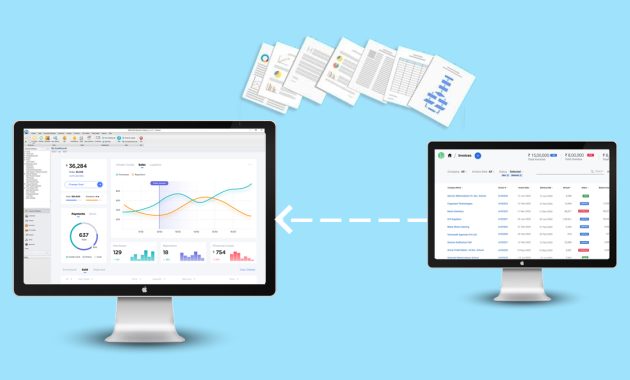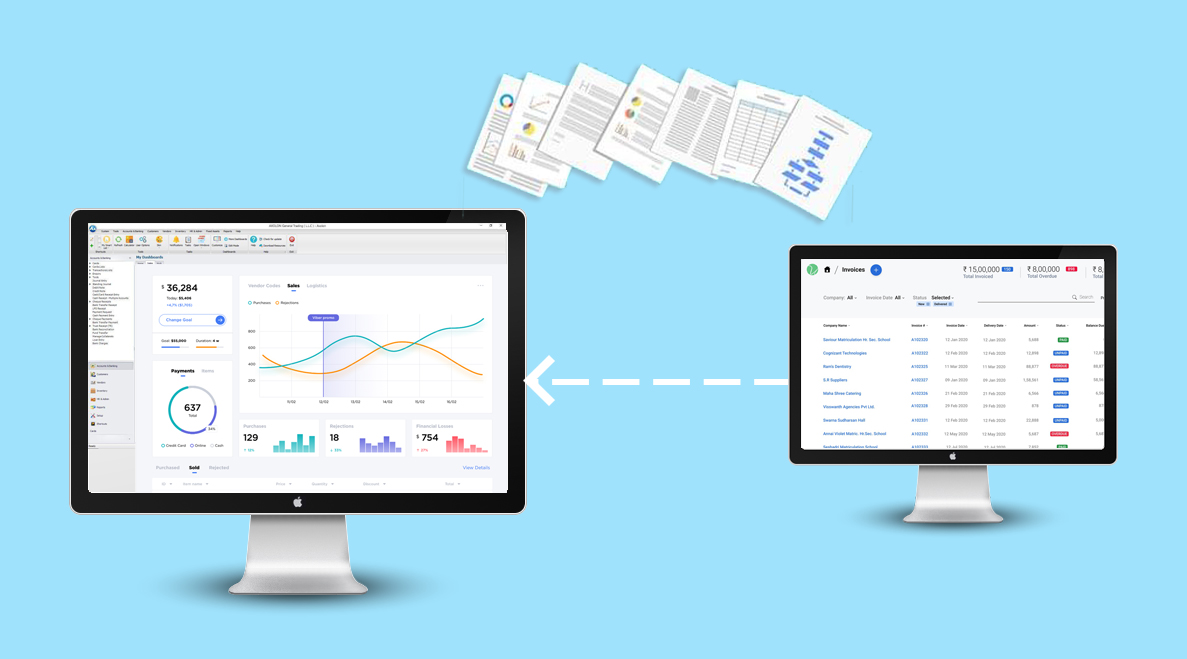
How to Build Reports with Business Intelligence Software Easily: A Practical Guide
In today’s data-driven world, the ability to extract meaningful insights from raw information is paramount. Business Intelligence (BI) software has emerged as a critical tool, empowering organizations to analyze data, identify trends, and make informed decisions. But, how do you build reports with this powerful software? This comprehensive guide provides a step-by-step approach to building reports with business intelligence software easily, ensuring you can leverage its capabilities effectively.
Building reports isn’t just about presenting data; it’s about telling a story. A well-crafted report transforms complex data into actionable insights. This guide will walk you through the process, from understanding your data to visualizing it effectively. The goal is to equip you with the knowledge to create reports that drive better decision-making within your organization. We will focus on making the process accessible, ensuring even those new to BI software can quickly master the art of report creation.
Understanding the Fundamentals of Business Intelligence Reporting
Before diving into the technical aspects, it’s crucial to grasp the core principles of business intelligence reporting. BI reports serve as a bridge between raw data and strategic actions. They enable you to:
- Visualize Data: Transform numbers into charts, graphs, and other visual elements.
- Analyze Trends: Identify patterns and insights within the data.
- Track Performance: Monitor key performance indicators (KPIs).
- Support Decision-Making: Provide the information needed to make informed choices.
The success of a BI report depends on the quality of the data and the clarity of the presentation. Reports must be accurate, relevant, and easily understandable. This section lays the groundwork for building effective reports, emphasizing the importance of data integrity and clear communication.
Data Preparation: The Foundation of Effective Reporting
Good reports start with good data. Data preparation is the first and most critical step. This involves cleaning, transforming, and organizing data to ensure accuracy and consistency. The process typically includes:
- Data Extraction: Gathering data from various sources, such as databases, spreadsheets, and cloud services.
- Data Cleaning: Identifying and correcting errors, inconsistencies, and missing values.
- Data Transformation: Converting data into a suitable format for analysis.
- Data Loading: Importing the prepared data into your BI software.
The more time you spend on data preparation, the better the results. Poor data quality leads to inaccurate insights. This section underscores the importance of robust data preparation practices before building any report.
Choosing the Right Business Intelligence Software
Several BI software options are available, each with its own strengths and weaknesses. The right choice depends on your specific needs, budget, and technical expertise. Consider these factors when selecting a BI tool:
- Ease of Use: Look for a user-friendly interface, especially if you are new to BI.
- Data Connectivity: Ensure the software can connect to your data sources.
- Reporting Capabilities: Evaluate the available chart types, visualization options, and report customization features.
- Scalability: Choose a tool that can handle your current data volume and future growth.
- Cost: Consider both the upfront and ongoing costs of the software.
Popular BI software options include Tableau, Power BI, Looker, and Qlik Sense. Each offers a range of features designed to help you build reports. Research and compare different tools to find the best fit for your organization.
Step-by-Step Guide: How to Build Reports with Business Intelligence Software Easily
Now, let’s build a report. The general process applies to most BI software, although specific steps may vary slightly. This guide uses a generic approach to illustrate how to build reports with business intelligence software easily.
- Connect to Your Data:
The first step involves connecting your BI software to your data sources. This typically involves providing connection details such as server address, database name, and credentials. Most BI tools support a wide range of data sources, including databases, spreadsheets, and cloud services.
- Select Data Fields:
Once connected, you can select the data fields you want to include in your report. These fields will form the basis of your analysis and visualizations. Choose fields that are relevant to your reporting goals.
- Choose a Visualization:
Select a visualization type that best represents your data. Common options include bar charts, line graphs, pie charts, and tables. The choice depends on the type of data and the insights you want to convey.
- Customize Your Report:
Customize the report by adding titles, labels, and formatting options. You can also apply filters and calculations to refine your data. Most BI tools offer a range of customization options to make your report visually appealing and informative.
- Add Filters and Interactions:
Add filters to allow users to drill down into the data and explore specific subsets. Interactive elements enhance the user experience. They make it easier to build reports with business intelligence software easily. These interactions allow for deeper analysis.
- Save and Share Your Report:
Save your report and share it with your intended audience. Many BI tools offer options for sharing reports via dashboards, email, or embedded links. Make sure your audience has appropriate access.
Advanced Techniques for Effective Reporting
Once you master the basics, you can explore advanced techniques to build more sophisticated and insightful reports.
- Calculated Fields: Create new fields based on existing data.
- Data Blending: Combine data from multiple sources within a single report.
- Advanced Visualizations: Utilize more complex chart types.
- Dashboard Creation: Build interactive dashboards to present multiple reports in one place.
- Automated Reporting: Schedule reports to be generated and delivered automatically.
These advanced techniques can significantly enhance the value of your reports. They provide a deeper understanding of the data.
Best Practices for Building Reports
Following best practices ensures your reports are effective and valuable:
- Define Your Objectives: Clearly state the purpose of the report.
- Know Your Audience: Tailor the report to their needs and understanding.
- Keep It Simple: Avoid overwhelming your audience with too much information.
- Use Clear Visualizations: Choose appropriate chart types.
- Provide Context: Add titles, labels, and descriptions.
- Ensure Accuracy: Validate your data.
- Regularly Review: Update and refine your reports.
These practices will help you build reports with business intelligence software easily. They also ensure they meet the needs of your audience.
Troubleshooting Common Reporting Issues
Even with careful planning, you may encounter issues. Here are some common problems and solutions:
- Data Errors: Always validate your data.
- Performance Issues: Optimize your queries.
- Confusing Visualizations: Simplify and clarify.
- Lack of Insights: Review your data.
- User Adoption: Provide training.
Addressing these issues will improve your reporting process. It will also lead to better outcomes.
The Benefits of Effective Business Intelligence Reporting
The ability to build reports with business intelligence software easily can transform your organization. Effective BI reporting offers several key benefits:
- Improved Decision-Making: Data-driven decisions are more effective.
- Enhanced Efficiency: Identify areas for process improvement.
- Better Performance Monitoring: Track KPIs.
- Increased Revenue: Identify sales opportunities.
- Competitive Advantage: Gain insights.
BI reports provide a competitive edge. They enable organizations to make data-driven decisions.
Conclusion: Mastering the Art of Reporting
Building reports with business intelligence software easily is an essential skill. It is a critical process for anyone who wants to leverage data for decision-making. By following the steps and best practices outlined in this guide, you can create effective and insightful reports that drive better outcomes. Remember to focus on data quality, clear communication, and continuous improvement. As BI software evolves, so will the methods. Continue learning. Embrace the power of data. You will transform data into actionable insights. This will empower your organization to thrive in today’s competitive landscape. Remember, practice makes perfect. Keep experimenting with the software. The ability to build reports with business intelligence software easily will become second nature.
The core of this article revolves around how to build reports with business intelligence software easily. The techniques described are crucial for any organization that relies on data. Use these methods to create effective reports.
[See also: Related Article Titles]

